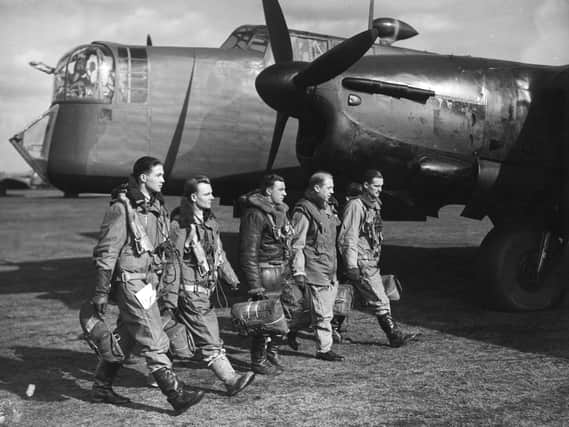THROUGH THE ARCHIVES: Bombs 'of heaviest type' dropped on Germany ny British and Soviet airplanes


On this day in 1941 the News Letter reported that the Krupps works at Essen were attacked by RAF bombers.
A communiqué issued by the Air Ministry had stated: “RAF bombers continued their attacks to force on Germany’s industrial towns on Thursday night. A great weight of the heaviest bombs was dropped on the armament factories of Essen, Dortmund and Hamm were also heavily attacked. Fine weather and good visibility favoured the attacks, and at all these places great damage was caused and widespread fires were left burning.”
Advertisement
Hide AdAdvertisement
Hide AdThe communiqué continued: “A small force attacked the docks at Boulogne. aircraft of Coastal Command attacked enemy aerodromes and other targets in Denmark and shipping off the Dutch coast. Enemy aerodromes in Northern France were attacked by aircraft of Bomber and Fighter Commands. Three aircraft of Bomber Command and one aircraft of Coastal Command are missing from these night operations.”
At Hamm there were huge fires among industrial buildings.
Dortmund an important railway yard was hit again and again, and elsewhere there was much damage to industrial buildings.
In all it was a successful attack on a city famous for its foundries, collieries, and machine works.
Meanwhile, in the course of the night’s work some of the British bombers found enemy shipping which they could attack.
Advertisement
Hide AdAdvertisement
Hide AdIt was reported: “In brilliant moonlight one bomber got in two direct hits from about 1,000 feet on a fairly large two funnel merchant ship. The ship blazed furiously. Another ship was hit and seen to be listing.”
It was also reported that Soviet aircraft had also taken the offensive over Germany. Berlin was attacked from the air and the Germans had alleged that the bombers were British.
The Air Ministry, however, made it clear that British bombers were nowhere near Berlin.